One of the most memorable moments of the 2022 Winter Olympics in Beijing, was when American athletes Alex Hall and Nick Goepper finished first and second, respectively, in the Men’s Freeski Slopestyle event. Months of training and a lifetime of preparation culminated in the teammates finishing together at the top of the field, but they wouldn’t have been able to do any of it without one underrated contribution – the excellence of the course itself.
In this case, the supplier of the courses for all the ski and snowboard events was Prinoth, and its sister company Prinoth Beijing, and was charged with servicing all the grooming and snowmaking vehicles on the ground at the Winter Olympics. Prinoth had been on this journey since December 2018, when it won the bid to be an official Beijing 2022 Olympic supplier.
“As a supplier, you bid and say what solutions you can provide, what ones you can’t, and whether you’d need to bring in another company for certain aspects. In this case, together with our sister company POMA Beijing, we were able to offer the complete package ourselves without having to partner with any other supplier or manufacturer,” said John Calverley, export manager at Prinoth.
Why even go to all the trouble of putting together a bid and wanting to be the official supplier of snow grooming equipment for the Winter Olympic Games in the first place?
“It’s the prestige,” said Calverley. “If you’ve got the best athletes in the world doing their job and we’re the best at what we do, those two aspects should fit together. We want to make sure ours is the name the athletes have in their minds as the one who provided the vehicles and drivers to prepare the slopes, which allowed them to perform at their best.”
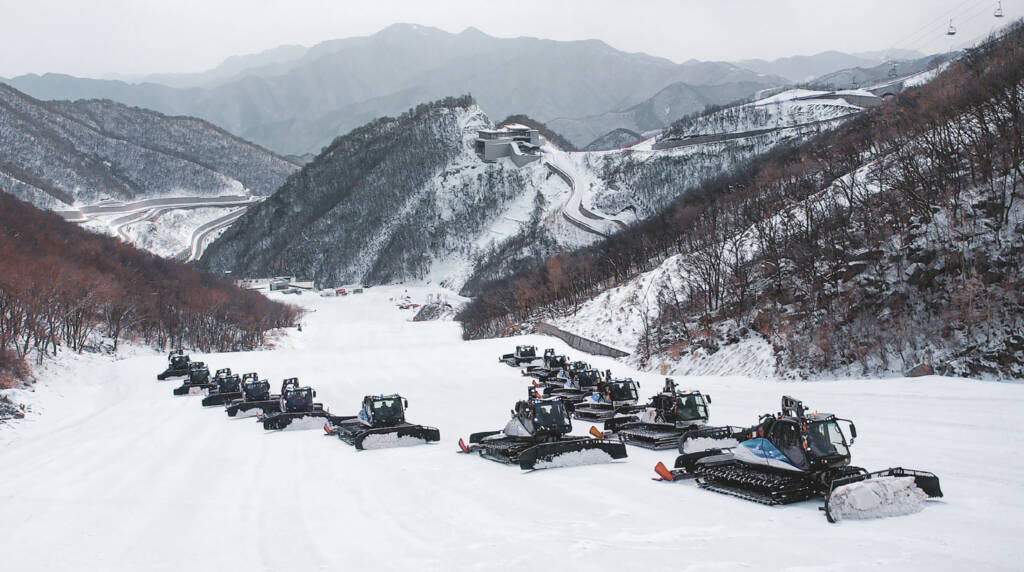
It doesn’t stop at the Winter Olympics in Beijing either. Look at their Facebook page and every day Prinoth is posting about the latest event their vehicles and drivers helped groom and shape, whether that be the Nordic World Cup in 2019 or The Junior Alpine Skiing World Championships in 2020.
“The best athletes in the world need the best pistes on the best slopes and we’re able to provide that,” said Ben Hodgson, head of marketing at Prinoth AG.
However, there’s a lot that goes into providing the best. The Federation of International Skiing (FIS) has strict requirements for their competitive courses, including that any grooming vehicle working on their behalf must be able to adhere to the rules and regulations of a particular ski or snowboard event.
For the Beijing Olympics, Prinoth unveiled a technology that hadn’t previously been used at any other games. Along with its snow measurement system and course design system, the course design received from FIS can be put through a digital program and uploaded to a server before being sent to a computer inside the vehicle, so the driver can build the course that’s been directly designed and digitized by FIS.
“What they’re able to do is build the course in the exact shape and the exact design that’s been given and when they’re making the snow, they can ensure it’s in the exact right place. This is a big jump when it comes to efficiency of the vehicle, efficiency of the snowmaking and the safety of the design itself, so when the course is finally built, it is mostly about the final aesthetics,” said Calverley.
For the driver, the screen displays a rendering of the course essentially like paint-by-numbers. On the screen are different colors that represent the different heights the course requires. Plus, there are sensors on the blade and the vehicle itself that measures what is being done with an accuracy of plus or minus three centimeters; basically telling the driver where to push snow while displaying the design.
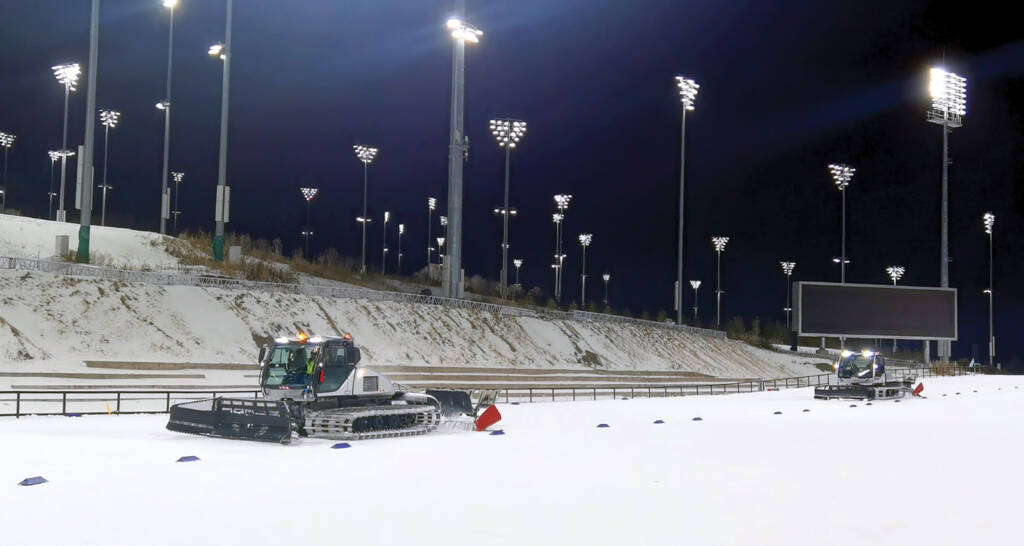
“The skills of the drivers are still very much required because you can’t take a person off the street and put them in the vehicle because there’s a lot of technical training that’s required, and almost all the drivers have Olympic experience already or at least five years’ experience driving groomers, which goes hand-in-hand with this new software,” said Calverley.
The snow that the athletes are skiing on is very different to what is found on the average tourist slope, the density is almost that of ice, so drivers need to have a very practiced judgement when it comes to course preparation.
Operators need to be able to discern whether the density of the snow is correct, whether the ice amount is correct, whether they need to inject water or whether they need to salt the slope. The driver needs to be able to hone their instincts in such a way that, together with FIS, they can ensure the conditions for the athletes are perfect.
In addition to wanting everything to be perfect for the day of the event, there’s also the added deadline of the Olympics themselves. By about Jan. 5, 2022, Prinoth’s drivers had about three to four weeks to get everything up and ready, each one easily pulling 12-, 14- or 16-hour shifts to get everything perfect for the Olympics.
“When you’re talking about downhill skiing like slalom or giant slalom, the slope steepness and the difficulty for those drivers is at the highest level. They could be driving across solidly packed ice or loose snow that has just fallen and they’re attached to a winch that’s running at the limit of its abilities,” said Calverley.
All in all, there were over 50 vehicles on-site of every model and make in Prinoth’s current product line to meet the vast requirements of the Winter Olympics. This included a Leitwolf with a winch for the downhill tracks to give the extra power to push the snow up. A Bison was used for the park areas for the slopestyle and free skiing events where a bit more maneuverability was needed, but it still had the power to push the snow to where it was needed.
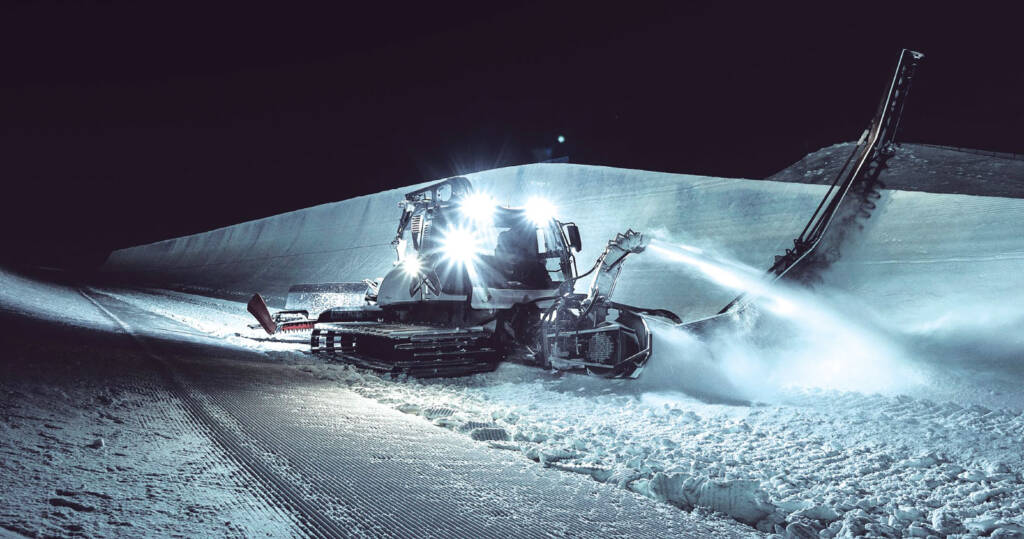
“We get a lot of positive feedback about the balance of the Bison vehicle because the motor is in the center of the vehicle and the drivers feel they’re sitting in the center of the seat and the right place for making jumps, landings and kickers,” said Calverley.
Finally, for the biathlon and cross-country events, the Husky was used as it has the power to push the snow out, but also the maneuverability of a smaller vehicle to get into tighter curves found on those types of courses.
Plus, there were several ancillary vehicles used, including two transport cabins to move employees to the top of the mountain, 21 people at a time. Vehicles could also be refueled on the slope with a diesel vehicle.
Beyond the equipment, Prinoth had an advantage because they have an office in China. This was especially beneficial when coping with China’s bubble system to stop the spread of Covid-19. It allowed the company to have one or two technicians on the ground who stayed until the Olympics were over and access to spare parts, if needed, was only 40 minutes away. Meanwhile the crew at the head office in Italy continued to provide online support and training.
“If Covid happened eight years ago, we’d be in a different position from where we are now, but the team that was in China already had the basics and the know-how to do everything themselves.”
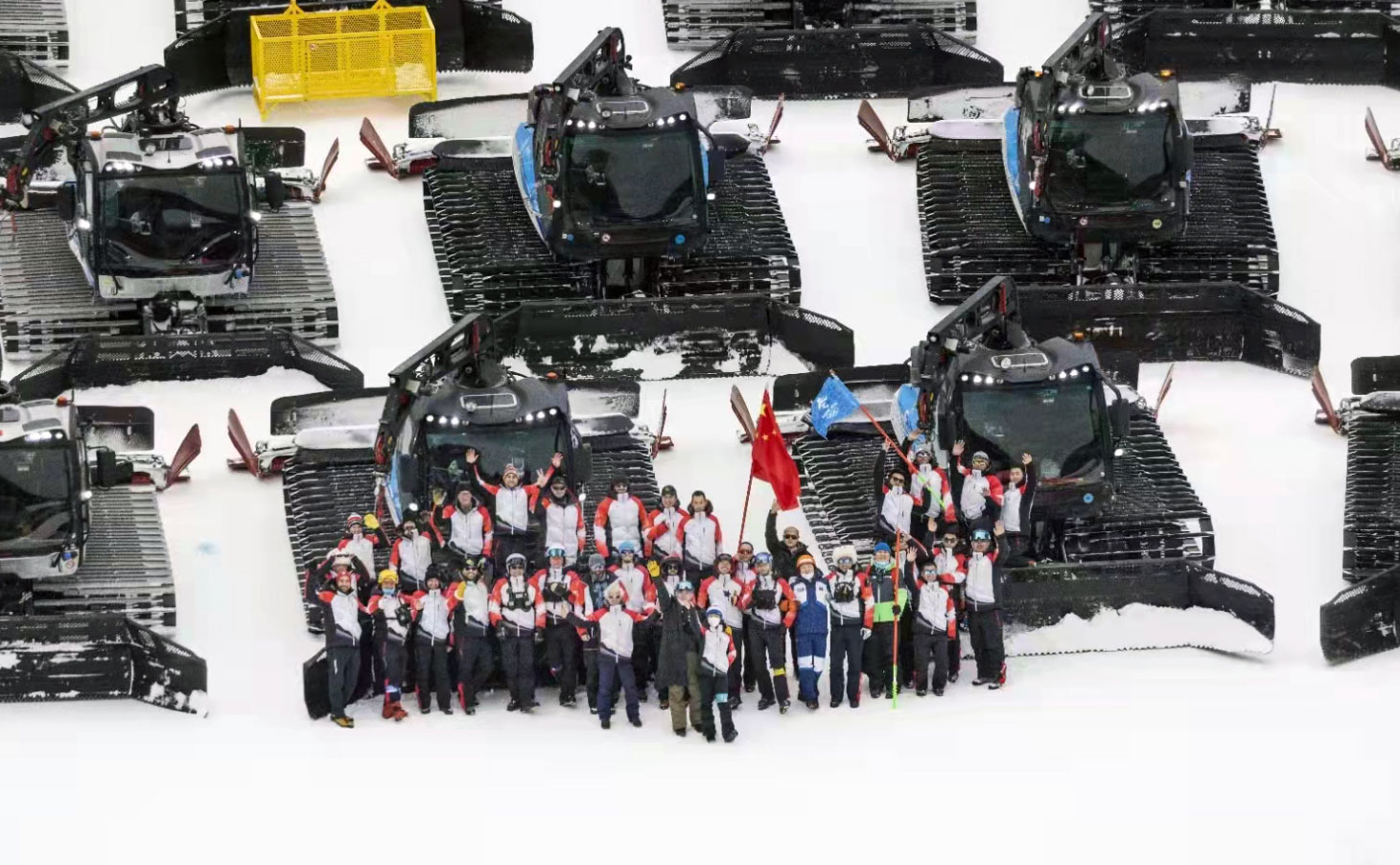
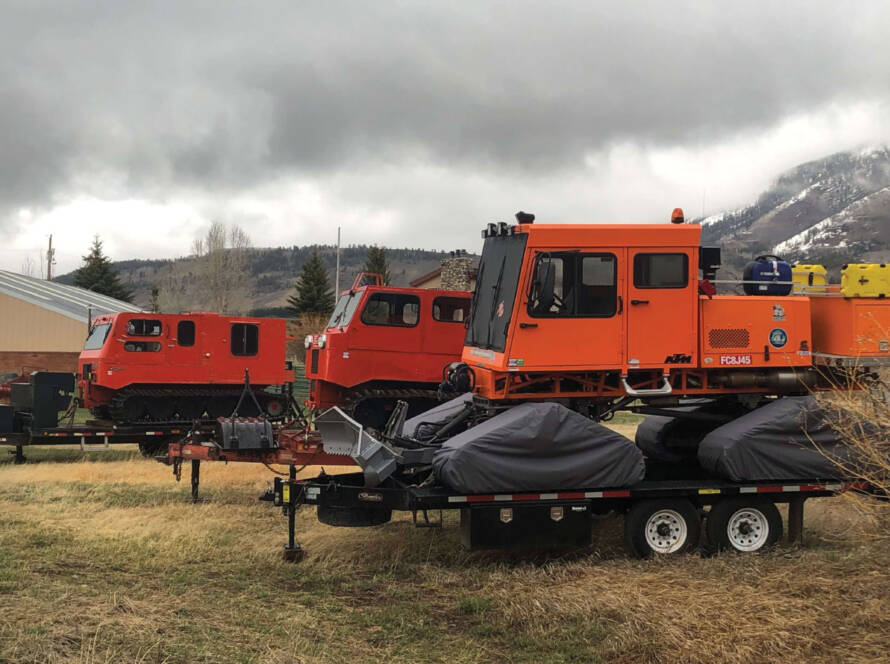
![[image placeholder]](https://www.snowopsmag.com/wp-content/uploads/2023/09/placeholder@2x-890x664.png)